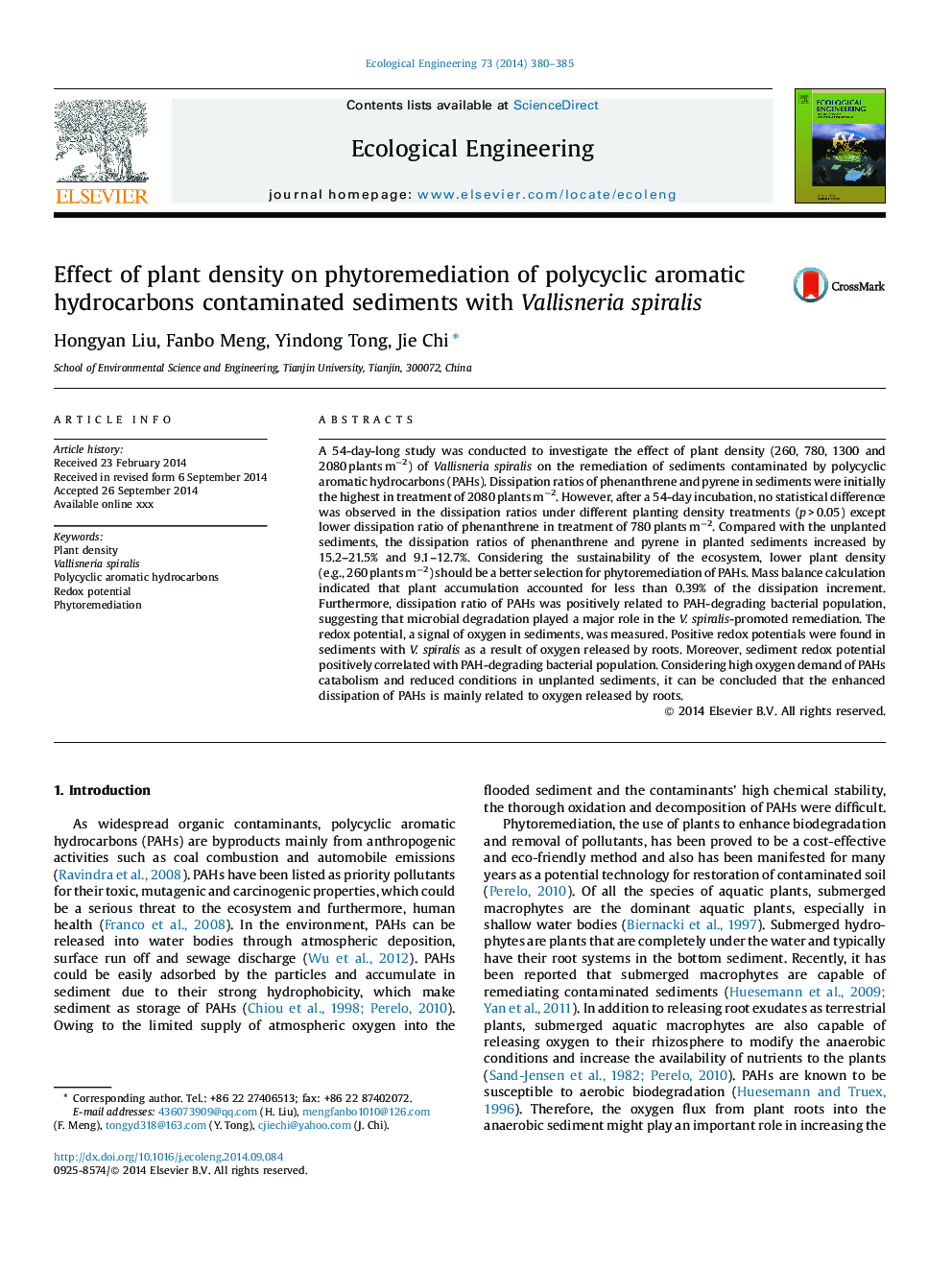| کد مقاله | کد نشریه | سال انتشار | مقاله انگلیسی | نسخه تمام متن |
|---|---|---|---|---|
| 6301954 | 1618026 | 2014 | 6 صفحه PDF | دانلود رایگان |
عنوان انگلیسی مقاله ISI
Effect of plant density on phytoremediation of polycyclic aromatic hydrocarbons contaminated sediments with Vallisneria spiralis
دانلود مقاله + سفارش ترجمه
دانلود مقاله ISI انگلیسی
رایگان برای ایرانیان
کلمات کلیدی
موضوعات مرتبط
علوم زیستی و بیوفناوری
علوم کشاورزی و بیولوژیک
بوم شناسی، تکامل، رفتار و سامانه شناسی
پیش نمایش صفحه اول مقاله

چکیده انگلیسی
A 54-day-long study was conducted to investigate the effect of plant density (260, 780, 1300 and 2080 plants mâ2) of Vallisneria spiralis on the remediation of sediments contaminated by polycyclic aromatic hydrocarbons (PAHs). Dissipation ratios of phenanthrene and pyrene in sediments were initially the highest in treatment of 2080 plants mâ2. However, after a 54-day incubation, no statistical difference was observed in the dissipation ratios under different planting density treatments (p > 0.05) except lower dissipation ratio of phenanthrene in treatment of 780 plants mâ2. Compared with the unplanted sediments, the dissipation ratios of phenanthrene and pyrene in planted sediments increased by 15.2-21.5% and 9.1-12.7%. Considering the sustainability of the ecosystem, lower plant density (e.g., 260 plants mâ2) should be a better selection for phytoremediation of PAHs. Mass balance calculation indicated that plant accumulation accounted for less than 0.39% of the dissipation increment. Furthermore, dissipation ratio of PAHs was positively related to PAH-degrading bacterial population, suggesting that microbial degradation played a major role in the V. spiralis-promoted remediation. The redox potential, a signal of oxygen in sediments, was measured. Positive redox potentials were found in sediments with V. spiralis as a result of oxygen released by roots. Moreover, sediment redox potential positively correlated with PAH-degrading bacterial population. Considering high oxygen demand of PAHs catabolism and reduced conditions in unplanted sediments, it can be concluded that the enhanced dissipation of PAHs is mainly related to oxygen released by roots.
ناشر
Database: Elsevier - ScienceDirect (ساینس دایرکت)
Journal: Ecological Engineering - Volume 73, December 2014, Pages 380-385
Journal: Ecological Engineering - Volume 73, December 2014, Pages 380-385
نویسندگان
Hongyan Liu, Fanbo Meng, Yindong Tong, Jie Chi,